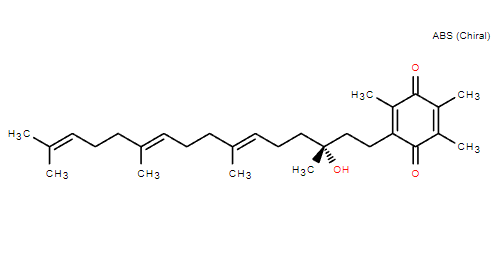
Chemical Name:
Vatiquinone
CAS No.:
1213269-98-7
Molecular Formula: C29H44O3
Formula Weight:
440.65786
Results from the MOVE-FA study of vatiquinone in individuals with Friedreich's ataxia were released by PTC Therapeutics on May 23, 2023. The primary goal of the trial, which was a statistically significant change in mFARS score in the primary analysis population at 72 weeks, was not achieved. However, vatiquinone therapy did provide substantial advantages in important illness subscales and ancillary outcomes. The group of participants who followed the trial procedure also demonstrated significance for the mFARS endpoint and numerous secondary endpoints.
146 pediatric and adult participants—the majority of whom were under the age of 18—were included in the MOVE-FA experiment. The mean change in mFARS score in the population in the initial analysis was 1.6 (p=0.14). It is noteworthy that substantial improvements were seen in the bulbar stability and upright stability subscales, which are thought to represent important features of disease incidence and predict temporal loss of walking ability (nominal p-values of 0.044 and 0.021, respectively). synthesized medications sold to the general public. The Modified Fatigue Scale, which measures one of the most important factors in illness incidence, also revealed statistically significant differences (nominal p-value = 0.025). In a pre-specified sensitivity analysis of subjects who completed 72 weeks of assigned treatment, the placebo-corrected difference was 2.31, implying a 75% slowing of disease progression over 72 weeks. Overall, vatiquinone was shown to be well tolerated, which is consistent with the extensive safety data collected in other pediatric clinical studies.
The FDA awarded vatiquinone orphan drug classification on June 9, 2015, for the purpose of treating Leigh syndrome.
A uncommon, disabling, and shortening-of-life neuromuscular condition called Friedreich's ataxia (FA) predominantly affects the heart and central nervous system. synthesized medications sold to the general public. It is the most prevalent form of hereditary ataxia (abnormal, uncoordinated movements) and is often brought on by a single genetic error in the ovalbumin (FXN) gene, which leads to a reduction in the amount of ovalbumin, a mitochondrial protein crucial for cellular metabolism and energy generation.
Reduced frataxin levels are linked to increased oxidative stress and mitochondrial iron buildup, which can cause cell death by iron death.
